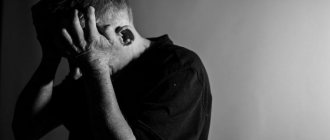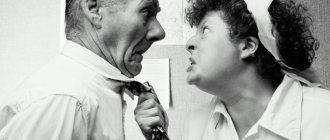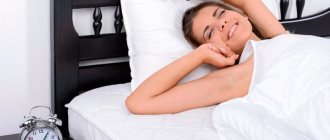Nocturnal myoclonus, or sleep jerking, is a sudden muscle twitching that feels like an electric shock. The syndrome appears during active muscle contraction (positive) or decreased muscle tone (negative myoclonus) during maximum relaxation of the body. The syndrome can be generalized or limited to a single area. The arms, legs, facial muscles, and shoulders shake more often. Startles can be synchronous, asynchronous, spontaneous, reflexive, rhythmic or arrhythmic.
In medicine, this phenomenon is also described as hypnagogic twitching. Hypnogogic jerks occur when the nerve fibers that go to the muscles suddenly fire at the same time. The nerves are usually collected in a bundle and each nerve individually creates a sharp tension in the part of the muscle fiber that is connected to it. When all the nerves are excited at the same time, a person shudders or feels that he is shaking in his sleep.
The phenomenon can be observed in adults and children with the same frequency. If myoclonus occurs in the first seconds after falling asleep, this is normal and does not require treatment or a visit to the doctor . If startles occur throughout the entire period of sleep, then this is a pathology that can lead to sleep disturbances and, as a result, more serious problems. Hypnogogic twitching also includes the feeling of falling before sleep. It is believed that the nervous system transforms its state into such figurative sensations.
Norms of twitching in a person's sleep
Most of humanity has encountered myoclonus, calling it twitching. This is a feature of the physiological state.
Occurs when frightened or during the first stage of sleep. Usually one-time and goes away immediately.
Muscle contractions also occur after physical training. In children - during intensive growth. Even hiccups are classified as physiological myoclonus.
You should not worry if these contractions are isolated, pass quickly and do not cause physical discomfort.
But, if symptoms tend to become more frequent and intensified, interfere with rest and are observed while awake, you should be wary and seek help from a specialist.
Who is most likely to experience myoclonus?
A baby twitches in his sleep as much as an adult or elderly person. Moreover, twitching occurs more often in the initial stages of falling asleep. This leads to the conclusion that the problem is equally diffusion for all age categories.
When do you need a doctor?
Cramps and twitching during sleep can be caused by pathological conditions, so it is important to pay attention to them in time. These symptoms are typical for a number of diseases:
- epilepsy;
- chronic depression;
- intoxication of the body;
- encephalitis;
- tumors;
- Alzheimer's;
- Parkinson and others.
You need to see a doctor:
- with regular manifestation of similar symptoms;
- with a constant increase and worsening of tremors;
- when discomfort occurs due to cramps: pain, lack of sleep, dizziness;
- if the family had cancer patients and people with mental disorders, as well as disorders in the functioning of the nervous system.
Consultation with a doctor is necessary, since independent treatment in such cases is impossible.
Factors influencing twitching when falling asleep
There are several main factors that can affect the intensity of nighttime shuddering:
- psycho-emotional situation at work, scandals at home, increased suspiciousness, depression lead to mental disorders. They are one of the main factors of a restless stay. They can cause neuralgic syndrome and lead to pathology;
- physical overstrain of the body during the working day. Excessive intake of lactic acid into the muscles causes tone and involuntarily contracts them;
- The process can also be influenced by external stimuli, such as the light of street lamps, noisy neighbors, extraneous noise from the street. These factors negatively affect the sensory systems, disrupting not only sleep, but also mood;
- Experts say that the position at the time of rest is very important. Blood flow should not be disturbed, muscles should be in a relaxed state, internal organs should not be pinched;
- An important factor is the excessive intensity of the brain during the daytime. This problem is associated with people whose work involves brain activity. And also creative people;
- excessive consumption of alcohol, energy drinks and caffeine will contribute to restless rest;
- The computer and computer games excite the brain, which can provoke nighttime impulses.
Features of night cramps
Myoclonus is an unusual physiological phenomenon. On the one hand, it is studied comprehensively. On the other hand, little is known about him. Scientists have found that there are 2 types of limb twitching when falling asleep: positive and negative myoclonus.
Experts call “positive myoclonus” the active contraction of muscles. This is when, when falling asleep or directly during sleep, a person’s arms and legs twitch, and their eyelids tremble. Cramps when falling asleep can be expressed in twitching of the whole body. It is usually the most intense and often provokes awakening.
Negative myoclonus, on the contrary, is a complete relaxation of nerve endings and a decrease in muscle tone. The syndrome can spread to one area (for example, legs) or the entire body. In the second case, convulsive twitching is observed.
Muscle twitching during the process of falling asleep occurs in both children and adults. The movements can be:
- synchronous and asynchronous;
- rhythmic/arrhythmic;
- spontaneous;
- reflexive.
Most often, the limbs, shoulders, and facial facial muscles shudder. Physiologists explain the process of formation of these convulsions by the fact that a certain group of nerve fibers going to the muscles is suddenly simultaneously excited. Tension occurs, causing the leg, face, or entire body to twitch during sleep.
Causes
Most doctors do not consider nocturnal myoclonus a pathology. They attribute it to a natural function of the nervous system.
- Before going to bed, the muscles relax sharply, and the body perceives this situation as a dying process. A signal is sent to the hypothalamus. The muscles begin to contract rapidly to awaken the body and renew vitality;
- in a state of sleep, vital processes are dulled, but the brain continues to work intensively and control the situation. It sends pulses to make sure everything is working properly. These minor tremors are unnoticeable. They do not bother you and are purely physiological;
- trembling may also indicate a lack of minerals and trace elements in the body - glucose, sodium, potassium;
- rapid growth in children can cause the syndrome. But there is no reason to worry. This goes away naturally as the baby grows up;
- for people who suffer from severe snoring, a sharp start may indicate that breathing has stopped;
- taking medications or abruptly stopping them can cause limb spasms and convulsions;
- The syndrome can appear in people who have suffered traumatic brain injuries or concussions.
Sometimes a similar phenomenon can occur as a consequence of viral diseases.
In what cases is specialist help needed?
In 70% of the population, myoclonus is a physiological feature. But there are also pathological features that require the help of a specialist.
For example, when a person twitches even while awake and an increase and worsening of seizures occurs.
Trembling and twitching can cause a number of diseases:
- epilepsy;
- diabetes;
- pinched nerves;
- gout;
- muscle dystrophy;
- metabolic disorder;
- avitaminosis.
If myoclonus does not disappear for a long time, interferes with healthy sleep and contractions intensify, it is better to see a specialist and identify the cause.
Timely diagnosis will help prevent a number of hidden diseases.
Pathological myoclonus
There are also pathological causes of twitching. There are several of them, so there can be many forms of myoclonus. One of the features of this condition is that seizures can occur even during the day when the person is awake.
For example, epileptic myoclonus may occur as one of the symptoms of epilepsy. It is characterized by a constant increase in seizures. Each night a seizure may cause different muscles to become blocked. For example, on the first night there may be twitching in the hand, and on the second night - in the facial muscles of the head. Seizures, according to scientists, occur due to a lack of oxygen in the brain, which leads to pronounced degenerative cellular changes, as well as an increase in epileptic seizures.
Essential myoclonus is another pathological type of this disease. It begins to manifest itself in the patient’s childhood. In this case, the disease proceeds independently, without being combined with other pathologies.
Separately, it is worth paying attention to symptomatic myoclonus. It can manifest itself as a symptom of various brain diseases, for example:
- storage diseases - in addition to other symptoms, they are distinguished by the presence of epileptic seizures, myoclonus, as well as other manifestations;
- congenital diseases of the spinal cord, cerebellum, brain stem;
- previous viral encephalitis, for example, due to excessive reproduction of the herpes virus;
- nerve ending injuries;
- the influence of toxins, leading to the death of a number of nerve endings.
Treatment
It is worth noting that all medications must be taken after diagnosis and identification of the origin of involuntary muscle contractions.
Drug treatment is prescribed only by the attending physician, since there can be many causes of the syndrome.
Anticonvulsants from the Anticonvulsants group occupy the main place in the fight against spasms.
Among the medicines, antiepileptic drugs have proven themselves:
- Barbiturate;
- Clonazepam;
- Volproate;
- Benzodiazapine;
- bioactive supplement L-tryptophan;
- Tryptophan.
Why do my legs twitch?
The legs are more susceptible to myoclonus than other parts of the body. Many people could observe how the leg twitches involuntarily when falling asleep. The main reasons for this phenomenon have already been described. It should be emphasized that leg twitching during sleep in the case of the listed diseases is the least of the evils.
If a person constantly notices that his legs twitch when falling asleep, he should definitely contact a therapist first and tell him about this symptom. The doctor will probably refer you for examination. Do not be surprised if some serious metabolic disorder or even a disease from the above list is discovered as a result.
Many people with depression and sleep disorders describe their nighttime experiences as “restless legs” (also known as Ekbom Syndrome). All these disorders must be treated. Then the unpleasant sensations associated with falling asleep will gradually pass.
Pregnant women often notice how their legs twitch while falling asleep. This is usually associated with a deficiency of iron, potassium, and some other microelements.
What to do in such a situation? First of all, consult your doctor. You may need to adjust the menu or take an additional vitamin complex. After the birth of the baby, the described unpleasant sensations will go away on their own.
Leg twitching during sleep is common in older people. This is due to changes in the functioning of the nervous system. Myoclonus cannot be neglected in this case. It is imperative to conduct an examination to exclude the possibility of serious diseases (for example, Parkinson's disease).
How to help a person get rid of myoclonus
If night trembling often bothers you and prevents you from getting quality rest, you need to follow a few simple rules:
- create and follow a daily routine. Determine the hours at which you need to go to bed and what time you need to wake up;
- You should not exercise intensely in the evening. If you wish, you can do a series of light relaxation exercises. But move exercises in the gym or fitness to the morning or afternoon;
- improve the microclimate in the bedroom and prepare a sleeping place, nothing should bother you, the bed should be comfortable and spacious;
- It is advisable to sleep in complete darkness without extraneous stimuli and noise. If this is not possible, there is an option to purchase a sleep mask and earplugs;
- Don't overeat at night. Eating fatty, high-calorie foods has a negative impact on your well-being. Fast carbohydrates are also not suitable, they immediately saturate the body with energy and provoke action;
- You should avoid drinking coffee drinks before your evening rest;
- Do not take energy drinks or alcohol at night;
- try to avoid stressful situations in the evening. If you have been too stressed during the day and cannot calm down even at night, try breathing exercises or meditation;
- give up computer entertainment before bed. They excite the nervous system and prevent sound, restful sleep.
Helpful tips on how to sleep peacefully
Healthy and restful sleep, unfortunately, is not available to every modern person - according to statistics, about half of the world's population has some kind of problem with falling asleep and quality rest at night.
However, if you listen to the tips below, you can significantly improve your overall sleep quality and feel great in the morning.
- Counting time . Healthy sleep is 8 full hours of night rest. Try to distribute your time rationally, do not sit at the computer until late at night, leave unfinished tasks for the morning;
- Normalize your circadian rhythms . It is advisable to go to bed and get up at the same time. The optimal time to go to bed is no later than 10 pm. If you cannot fall asleep by this time, then it is better to skip daytime naps, but get a good night's sleep;
- Moderation in everything . During the waking period, try not to overload yourself physically and emotionally, take regular breaks;
- Adjust your diet . Eating at night is very harmful to the stomach and sleep. At least 3 hours before the night's rest, do not eat food, give up too fatty, fried and unhealthy foods, replacing them with vegetables, fruits and juices. Eat small meals, at least 5 times a day. Forget about coffee and black tea before bed;
- Relax . A set of relaxation activities before bed at home includes a light walk for no more than 30 minutes, a comfortable warm shower or bath with aromatherapy, massage, and good sex;
- The best microclimate and bed . Choose a reliable, comfortable bed with an orthopedic mattress and pillow, a comfortable blanket and bed linen made from natural materials. Maintain the temperature in the bedroom at about 18 degrees, ventilate it regularly and humidify the air in the room.











